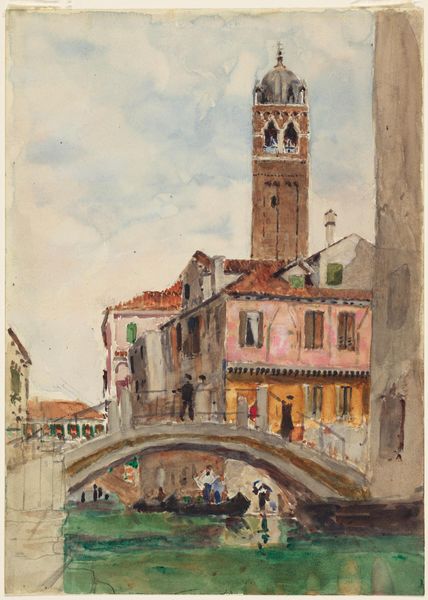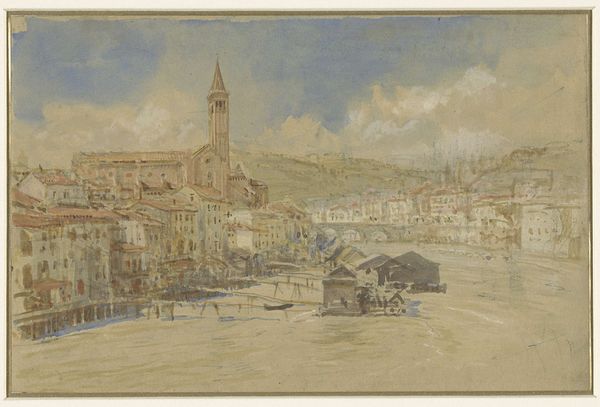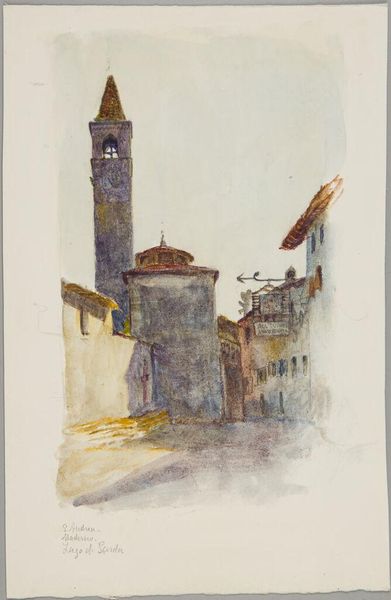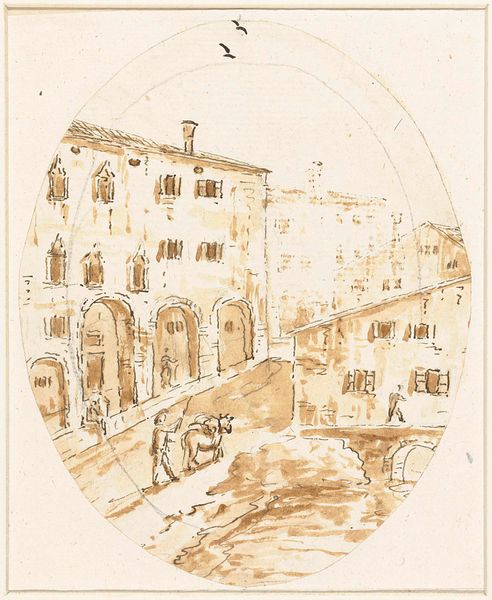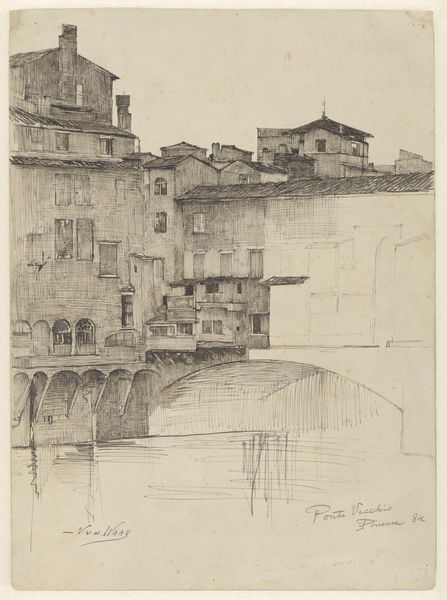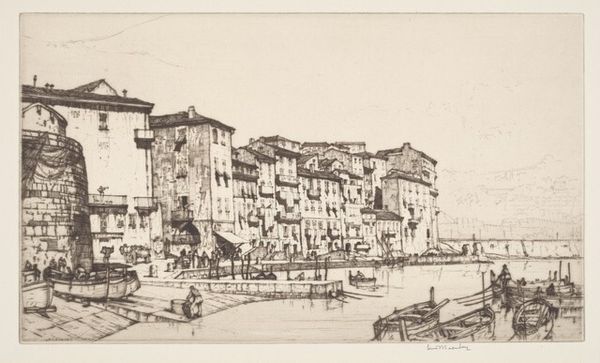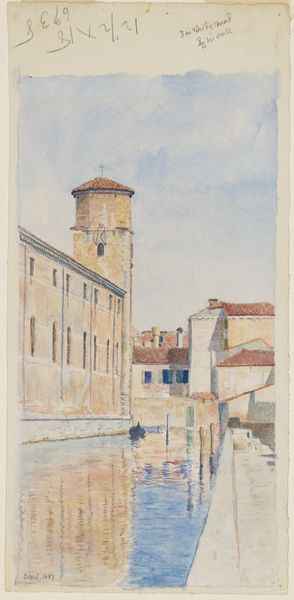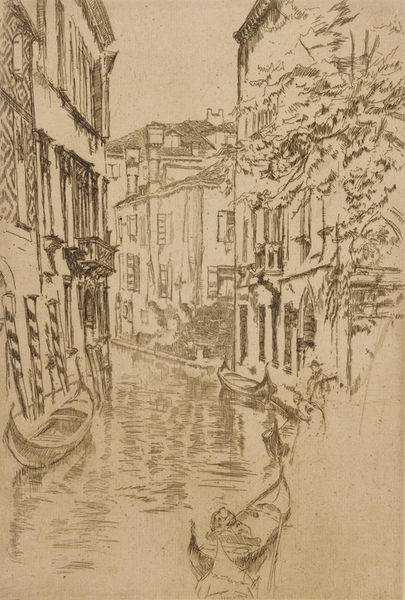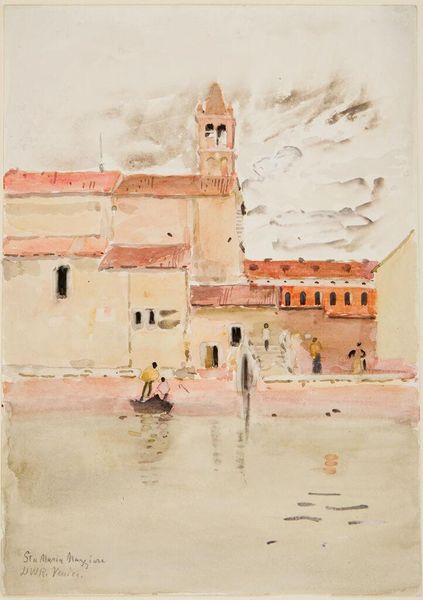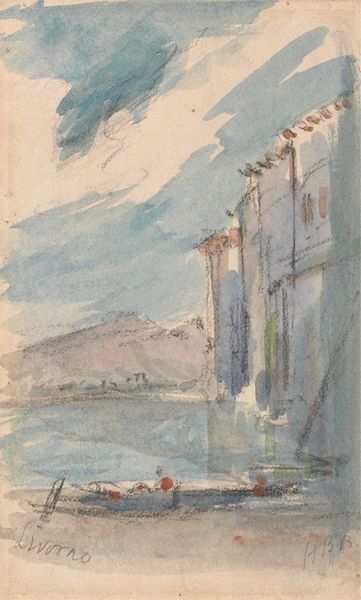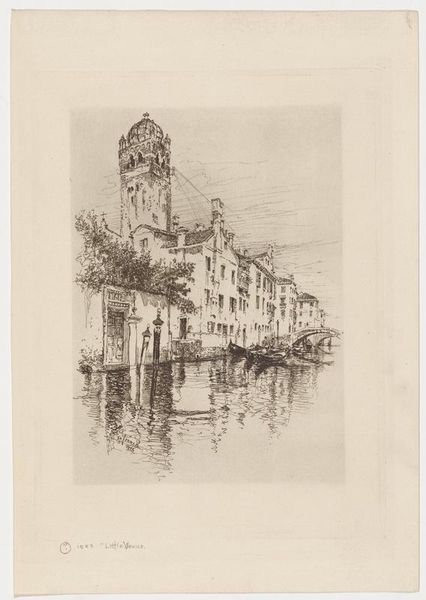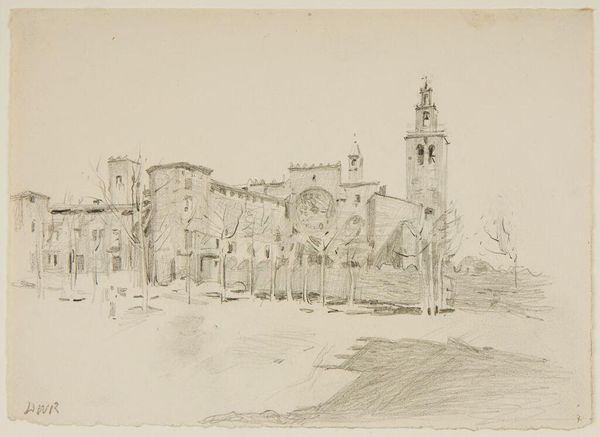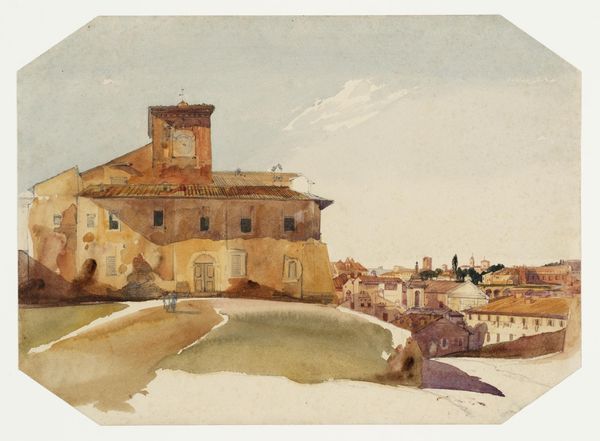
drawing, watercolor, architecture
#
architectural sketch
#
drawing
#
landscape
#
watercolor
#
architecture drawing
#
cityscape
#
watercolour illustration
#
watercolor
#
architecture
#
realism
Dimensions: overall: 46.7 x 43.1 cm (18 3/8 x 16 15/16 in.)
Copyright: National Gallery of Art: CC0 1.0
Editor: This architectural study, "View of Trento" by Albert Emil Kirchner, renders the Italian city in muted watercolors and drawings. There's a sepia-toned effect that gives the scene a somewhat nostalgic feel, despite the crispness of the architectural rendering. What draws your eye when you examine this piece? Curator: The formal elements present a rather interesting tension. Observe the linear precision with which Kirchner depicts the architectural facades, juxtaposed against the almost ethereal washes of the sky and the plaza. The interplay of line and wash creates a dynamic surface. Editor: Yes, the crispness of the architecture set against the soft background is interesting! The sharp lines versus the blended sky. What do you make of the composition? Curator: Note how the artist divides the pictorial space. The buildings are clustered towards the upper half of the composition while leaving much of the foreground to the plaza space that foreground directs the viewers gaze. Kirchner invites us to consider space and structure equally, the interplay of negative and positive spaces becomes almost as critical as architectural details. Editor: That makes sense. The empty foreground leads your eyes to all the detail in the buildings! I hadn't noticed how carefully composed that negative space was. Curator: Exactly. The very tonal restraint invites us to discern subtle variations, doesn't it? There's a structured ambiguity present that engages a deep looking to fully perceive. Editor: I see what you mean, the formal structure supports an almost hyper-realistic study and it asks that viewers understand architecture through realism in a somewhat analytical method of documentation, almost scientific. Curator: Precisely. Formal analysis illuminates artistic intentions, and helps us discern both conscious and subconscious aesthetic choices by the artist. Editor: I definitely learned something new today, analyzing architecture in the structure, and intention that realism brings.
Comments
No comments
Be the first to comment and join the conversation on the ultimate creative platform.
